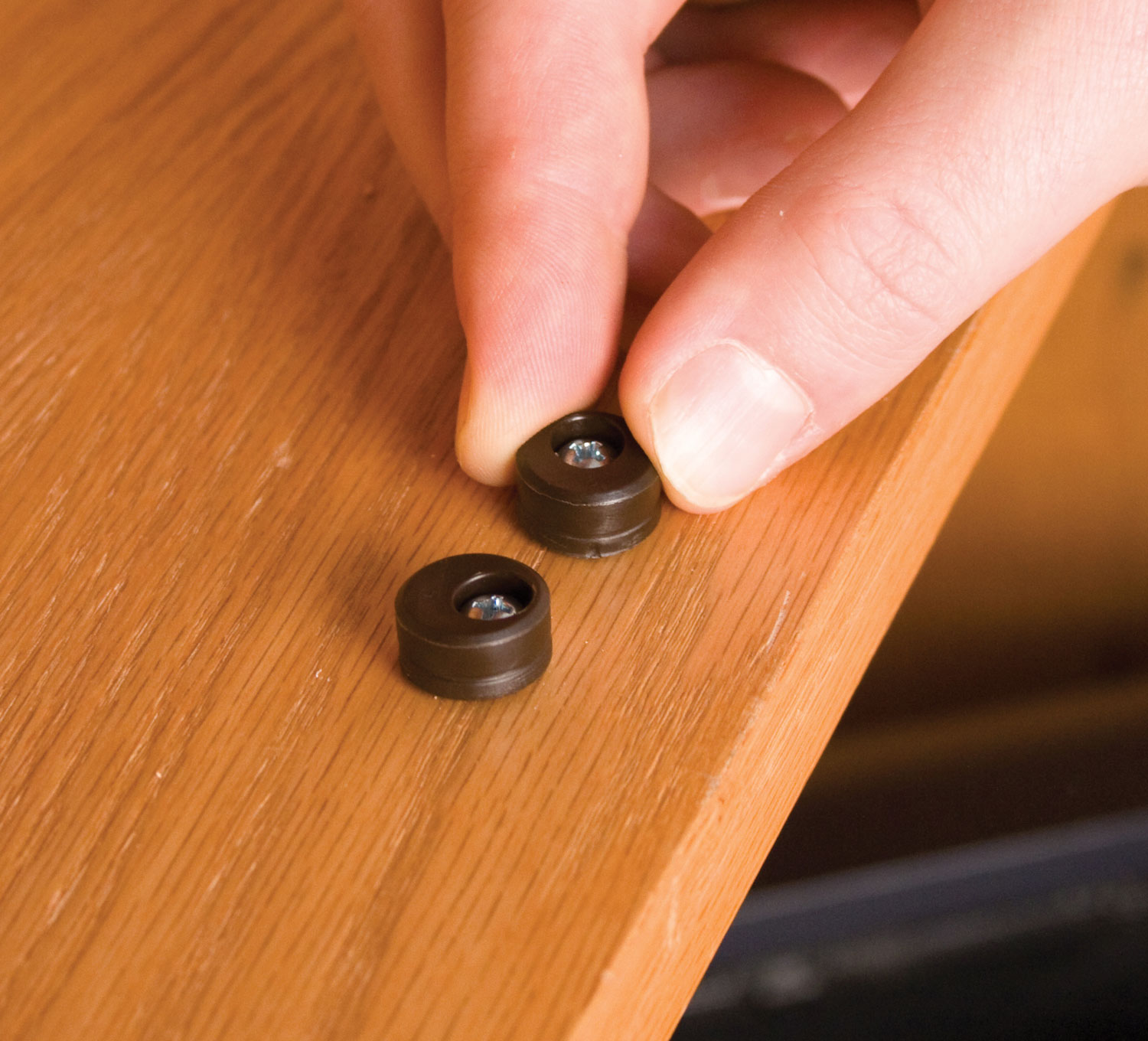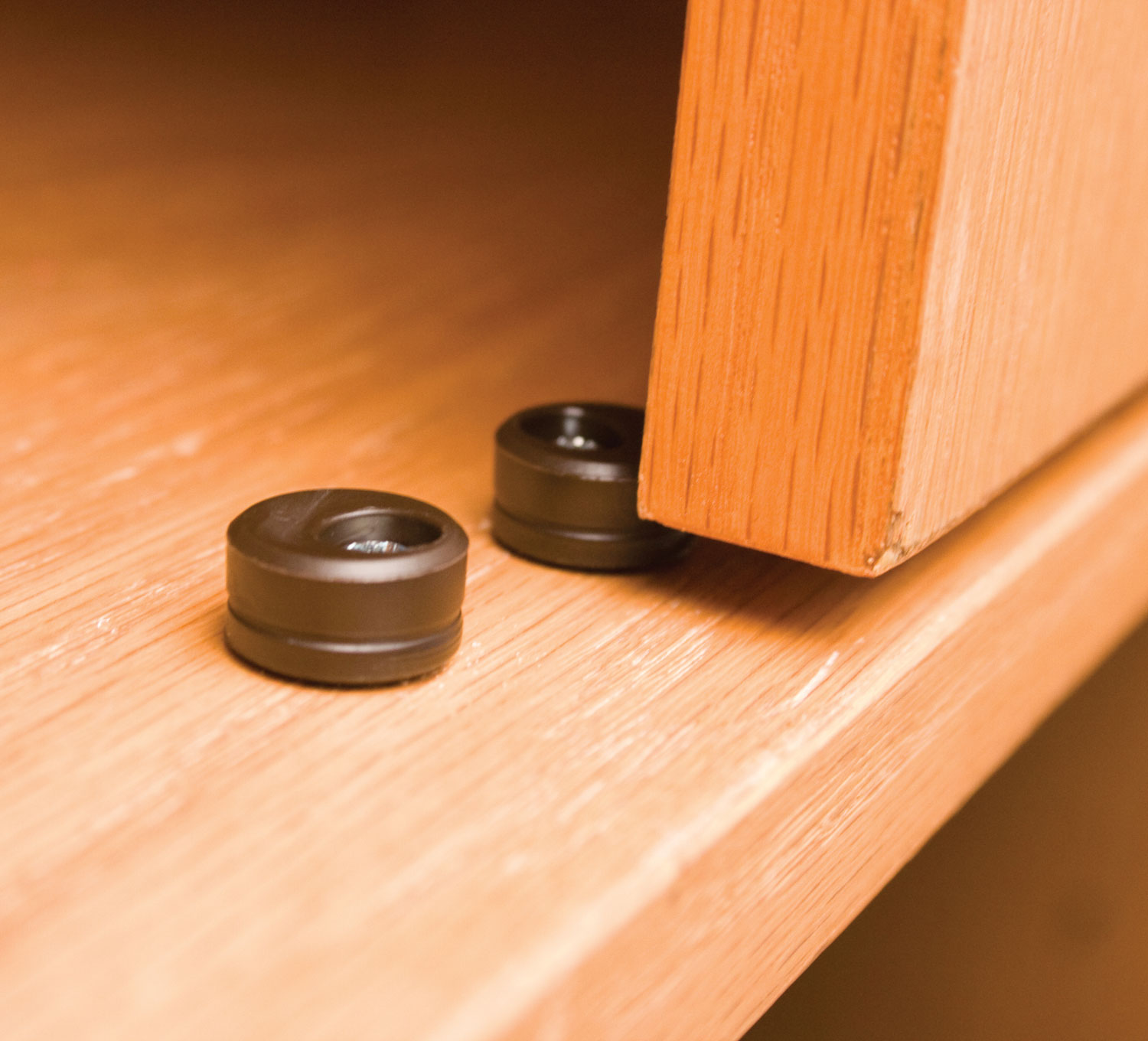KraftMaid Cabinet Door Stops

KraftMaid cabinet door stops are essential components for ensuring the smooth and safe operation of your kitchen or bathroom cabinets. They prevent doors from slamming, protect walls and adjacent cabinets from damage, and contribute to the overall longevity of your cabinetry. Understanding their functionality and the various types available is key to selecting the right stop for your needs and ensuring proper installation.
KraftMaid Cabinet Door Stop Types and Features
KraftMaid offers several types of cabinet door stops, each with unique characteristics. The choice depends on factors such as cabinet style, door weight, and personal preference. The following table summarizes the key differences:
| Type | Material | Installation | Function |
|---|---|---|---|
| Standard Magnetic Catch | Metal (often with a plastic cover) | Screw-mounted to the cabinet frame and door | Provides a gentle, magnetic hold, preventing slamming. Often adjustable for varying door gaps. |
| Self-Adhesive Bumper Stop | Rubber or foam with an adhesive backing | Applied directly to the cabinet frame or door | Offers basic protection against slamming; suitable for lighter doors and less frequent use. Not as durable as screw-mounted options. |
| Concealed Hinge-Mounted Stop | Metal | Integrated into the cabinet hinge mechanism | Provides a soft-close function, preventing slamming and offering a clean, integrated look. Usually requires specialized hinges. |
| Cabinet Door Stop with Cushion | Metal with a rubber or plastic cushion | Screw-mounted to the cabinet frame | Provides a firm stop with a cushioned impact to prevent damage to the door and cabinet. |
Installing a Standard KraftMaid Cabinet Door Stop
Installing a standard KraftMaid cabinet door stop is a straightforward process. However, proper preparation and careful execution are essential to ensure a secure and functional installation. Always follow the manufacturer’s instructions included with your specific door stop.
- Gather Tools: You will need a screwdriver (Phillips head is common), a pencil, and a measuring tape.
- Mark the Location: Close the cabinet door and carefully mark the desired location for the door stop on both the cabinet frame and the door. Ensure the markings align when the door is closed.
- Pre-Drill (Optional): For harder wood, pre-drilling pilot holes will prevent the wood from splitting. Use a drill bit slightly smaller than the screw diameter.
- Attach the Stop: Securely fasten the door stop to the cabinet frame and door using the provided screws. Ensure the stop is level and flush against the surface.
- Test the Function: Open and close the cabinet door several times to test the functionality of the newly installed stop. Adjust as needed.
Troubleshooting Common Problems with KraftMaid Cabinet Door Stops
Several issues can arise with KraftMaid cabinet door stops over time. Addressing them promptly prevents further damage and maintains the smooth operation of your cabinets.
- Door Slamming: This could be due to a weak magnetic catch (if applicable), improper installation, or a damaged stop. Check the strength of the magnet, reinstall the stop, or replace it if necessary.
- Loose Door Stop: Over time, screws can loosen, causing the stop to become ineffective. Tighten the screws or replace them with longer ones if needed. Use wood glue for added security if the holes are stripped.
- Misaligned Stop: If the stop is misaligned, the door may not close properly or may rub against the frame. Carefully readjust the stop to ensure proper alignment.
- Worn-Out Cushions or Bumpers: Over time, rubber or plastic cushions can wear out, reducing effectiveness. Replace the worn-out parts with new ones.
KraftMaid Cabinet Door Stops Aesthetics and Design

KraftMaid cabinet door stops, while functional, play a significant role in the overall aesthetic appeal of your kitchen. A well-chosen door stop can subtly enhance the design, complementing the cabinet style and adding a touch of sophistication or rustic charm, depending on your preference. The right door stop can be the final detail that elevates your kitchen’s look from simply functional to truly stylish.
Cabinet Style and Door Stop Design Coordination
The selection of a cabinet door stop should be carefully considered in relation to the overall kitchen design. Different styles call for different aesthetic approaches. The following table illustrates appropriate door stop designs for various cabinet styles:
| Cabinet Style | Door Stop Material | Door Stop Finish | Design Notes |
|---|---|---|---|
| Traditional | Solid Brass or Wood | Polished Brass, Antique Bronze, or Dark Stain | Ornate details, possibly with a subtle curve or decorative element. |
| Modern | Brushed Stainless Steel or Aluminum | Satin Nickel or Brushed Aluminum | Clean lines, minimalist design, possibly integrated into the cabinet frame. |
| Shaker | Wood | Matching the cabinet finish or a slightly contrasting stain | Simple, rectangular design that complements the Shaker style’s clean lines. |
| Rustic | Wrought Iron or Reclaimed Wood | Blackened finish or natural wood tone | Textured surface, possibly with a slightly distressed look. |
KraftMaid Cabinet Door Stop Design Variations
Here are three distinct KraftMaid cabinet door stop design concepts, showcasing diverse materials and styles:
Kraftmaid cabinet door stops – Design 1: Modern Minimalist (Metal)
This design features a sleek, brushed stainless steel stop measuring 1.5 inches in length, 0.5 inches in width, and 0.25 inches in thickness. The edges are smoothly rounded for a clean, modern aesthetic. The stainless steel is chosen for its durability and resistance to scratches and corrosion. The stop is affixed to the cabinet using small, concealed screws.
Design 2: Traditional Elegance (Wood)
This design utilizes solid cherry wood, stained to match traditional cabinetry. The stop is 2 inches long, 0.75 inches wide, and 0.5 inches thick. It features a gently curved top edge and a slightly tapered profile for a more refined look. The wood is carefully finished with multiple coats of clear lacquer to protect it from moisture and wear.
Design 3: Rustic Charm (Reclaimed Wood)
This design incorporates reclaimed barn wood, showcasing natural variations in color and texture. The stop is roughly 2.5 inches long, 1 inch wide, and 0.6 inches thick, with an uneven, slightly distressed finish. A clear sealant is applied to protect the wood without masking its natural character. The raw, natural look contributes to the rustic aesthetic.
KraftMaid Cabinet Door Stop Design Comparison
KraftMaid cabinet door stops generally emphasize functionality and subtle design integration. Compared to brands like Blum, which often feature more overtly designed and technologically advanced stops (e.g., soft-close mechanisms), KraftMaid’s designs tend towards a more understated elegance. While Blum might prioritize innovation in dampening technology, KraftMaid focuses on providing reliable, aesthetically compatible stops that complement their cabinetry. Other brands, such as Hafele, might offer a wider range of finishes and materials, but KraftMaid maintains a consistent focus on designs that seamlessly integrate into their overall cabinet systems.
Troubleshooting and Maintenance of KraftMaid Cabinet Door Stops

Proper care and maintenance of your KraftMaid cabinet door stops will ensure their longevity and the smooth operation of your cabinets. Ignoring minor issues can lead to more significant problems down the line, potentially requiring costly repairs. Regular inspection and proactive maintenance are key to preventing these issues.
Preventing common problems, such as loosening or breakage, involves simple yet effective practices. Regularly check the screws securing the door stops to the cabinet doors and frames. Tighten any loose screws to maintain a secure fit. Avoid slamming cabinet doors, as this puts excessive stress on the door stops and can lead to premature wear and tear. Consider using soft-close hinges to further reduce the impact on the door stops. Also, be mindful of any potential impacts to the door stops, like accidental bumps or collisions.
Replacing a Damaged KraftMaid Cabinet Door Stop
Replacing a damaged KraftMaid cabinet door stop is a straightforward process that can be completed with basic tools. The steps below provide a detailed guide, assuming you have a replacement door stop. If not, consult your KraftMaid dealer or check their website for replacement parts.
- Step 1: Preparation and Assessment. Carefully examine the damaged door stop and the surrounding area on the cabinet door and frame. Note the type of door stop (e.g., surface-mounted, inset), the screw size and type, and any existing damage to the cabinet or door. Take photos to aid in the purchase of a replacement part if necessary. A clear understanding of the existing configuration is essential for successful replacement.
- Step 2: Removal of the Old Door Stop. Using the appropriate screwdriver (likely a Phillips head), carefully remove the screws securing the old door stop. Work slowly and methodically to avoid damaging the cabinet door or frame. If the screws are stripped or difficult to remove, use penetrating oil and allow it to soak in for a few minutes before attempting to remove them again. If screws break off, you may need specialized tools to remove the broken fragments.
- Step 3: Cleaning and Preparation. Once the old door stop is removed, clean the area around the mounting holes on the cabinet door and frame. Remove any debris, dust, or old adhesive residue. This ensures a clean and secure fit for the new door stop.
- Step 4: Installation of the New Door Stop. Position the new door stop in the same location as the old one. Ensure it is aligned correctly and sits flush against the cabinet door and frame. Carefully insert and tighten the screws, avoiding over-tightening which could strip the screw holes or damage the door stop.
- Step 5: Testing and Adjustment. Once the new door stop is installed, test its functionality by opening and closing the cabinet door several times. Adjust the position or tightening of the screws if necessary to ensure the door stops correctly and smoothly. If the door still doesn’t stop correctly, double-check the alignment of the door stop with the cabinet frame.
Common Replacement Parts for KraftMaid Cabinet Door Stops
Having readily available replacement parts can significantly reduce downtime in case of damage. It is advisable to keep a spare door stop on hand, especially if you have multiple cabinets with the same type of door stop.
- Standard Surface-Mounted Door Stop: These are the most common type and are easily replaceable. (Note: Part numbers vary widely depending on the specific KraftMaid cabinet model and door stop design. Check your KraftMaid documentation or contact their customer service for specific part numbers.) A visual inspection of the existing door stop will help determine the appropriate replacement.
- Inset Door Stop: These are mounted within the cabinet door frame and may require more precise installation. (Again, specific part numbers will depend on your model.)
- Screws: It’s always a good idea to have a selection of appropriate screws on hand. Keep in mind the size and type of screw used for your specific door stop.
